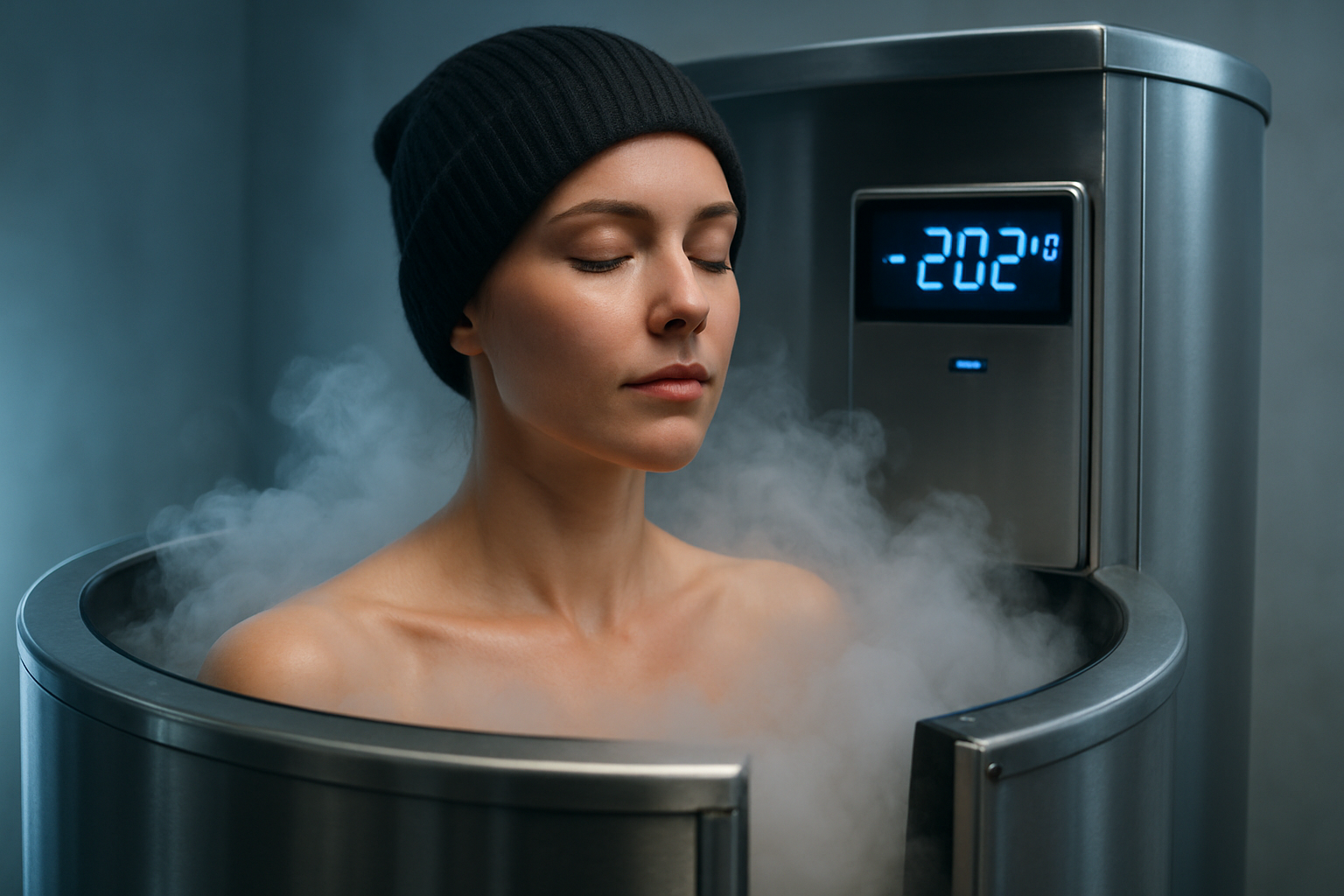Cryotherapy: The Cold Truth Behind the Wellness Craze
In recent years, a chilling new trend has swept through the wellness world, promising a host of health and beauty benefits. Cryotherapy, the practice of exposing the body to extremely cold temperatures for short periods, has captured the attention of athletes, celebrities, and health enthusiasts alike. This icy treatment, once reserved for medical rehabilitation, has now found its way into spas, wellness centers, and even dedicated cryotherapy clinics. As the popularity of this frosty therapy continues to rise, it's time to take a closer look at the science, claims, and potential risks behind the big freeze.

Today’s cryotherapy chambers can reach temperatures as low as -200°F (-128°C), with sessions typically lasting between two and four minutes. Proponents claim that this brief exposure to extreme cold can boost metabolism, reduce inflammation, improve skin tone, and even enhance athletic performance. But as the treatment gains popularity, scientists and health professionals are racing to keep up with the research needed to substantiate these bold claims.
The Science of Subzero: How Cryotherapy Works
When the body is exposed to extreme cold, it initiates a series of physiological responses. Blood vessels near the skin’s surface constrict, redirecting blood flow to vital organs. This process, known as vasoconstriction, is believed to reduce inflammation and swelling throughout the body. As the body warms up after the session, blood rushes back to the extremities, potentially carrying nutrients and oxygen more efficiently.
Cryotherapy is also thought to trigger the release of endorphins, the body’s natural pain-relieving and mood-enhancing chemicals. Some researchers believe that the cold exposure may stimulate the production of brown adipose tissue, a type of fat that helps burn calories and regulate body temperature. However, the long-term effects of repeated cryotherapy sessions on metabolism and weight management are still under investigation.
From Athletes to Aesthetics: The Many Faces of Cryotherapy
Initially popular among elite athletes for its potential to speed up recovery and reduce muscle soreness, cryotherapy has now found its way into various aspects of wellness and beauty. Professional sports teams and Olympic training centers have invested in cryotherapy chambers, with many athletes swearing by the treatment’s ability to enhance performance and reduce injury recovery time.
In the beauty world, cryotherapy has been adapted for facial treatments, promising to tighten pores, boost collagen production, and give skin a youthful glow. Some spas offer localized cryotherapy treatments for targeted areas of the body, claiming benefits such as cellulite reduction and improved skin tone. The wellness industry has embraced cryotherapy as a potential tool for stress reduction, improved sleep, and even mood enhancement.
The Cold, Hard Facts: Evaluating Cryotherapy’s Claims
Despite its growing popularity, the scientific evidence supporting cryotherapy’s many claims remains mixed. Some studies have shown promising results for pain reduction and muscle recovery in athletes, while others have found no significant benefits over traditional ice baths or rest. The effects on metabolism and weight loss are particularly controversial, with limited research to support long-term benefits.
When it comes to beauty and anti-aging claims, the evidence is even more sparse. While some users report immediate improvements in skin appearance, long-term studies on cryotherapy’s effects on collagen production and skin health are lacking. The mood-enhancing and stress-reducing effects of cryotherapy may be partly attributed to the placebo effect and the general sense of wellness that comes from trying a novel treatment.
Safety First: Navigating the Risks of Extreme Cold
As with any trendy wellness treatment, it’s crucial to consider the potential risks of cryotherapy. While generally considered safe for healthy individuals when performed under proper supervision, there have been reports of adverse effects ranging from skin burns to more serious complications. People with certain medical conditions, such as high blood pressure, heart problems, or Raynaud’s syndrome, should avoid cryotherapy or consult a doctor before trying it.
The lack of regulation in the cryotherapy industry is a concern for many health professionals. Unlike medical devices, cryotherapy chambers are not approved or regulated by the FDA, leading to variations in equipment quality and safety protocols across different facilities. Users should always choose reputable providers and follow all safety guidelines, including proper protective gear and time limits for exposure.
The Future of Freeze: Where Cryotherapy is Headed
As research continues to catch up with the cryotherapy trend, we can expect to see more targeted applications and refined protocols. Some scientists are exploring the potential of cryotherapy in fields as diverse as mental health treatment and athletic performance enhancement. The beauty industry is likely to continue developing more specialized cryotherapy treatments for various skin concerns.
However, the future of cryotherapy will largely depend on the results of ongoing and future clinical trials. As more rigorous studies are conducted, we may see a clearer picture of which claims hold up to scientific scrutiny and which are merely cold comfort. Until then, those interested in trying cryotherapy should approach it with a healthy dose of skepticism and a clear understanding of its potential risks and limitations.
In the ever-evolving world of wellness and beauty, cryotherapy represents a fascinating intersection of ancient cold therapy techniques and modern technology. Whether it proves to be a revolutionary treatment or just another passing fad, the cryotherapy craze has certainly brought a breath of fresh, frigid air to the industry. As we continue to push the boundaries of what’s possible in health and wellness, one thing is clear: the allure of a quick fix will always be tempting, but true well-being often requires a more holistic, evidence-based approach.





